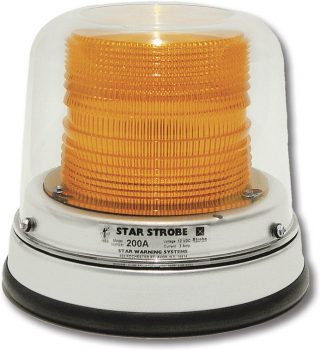Emergency Vehicle Lights and Colors
 The colors used on an emergency vehicle vary based on local, state, and national laws. There are some general themes, however.
The colors used on an emergency vehicle vary based on local, state, and national laws. There are some general themes, however.
The most common colors used on emergency vehicles are red, blue, amber or yellow, white, green, and purple. Each color is subject to specific regulations that serve to communicate the purpose and context of the vehicle’s activity to others. For instance, red forward-facing lights almost always indicate an emergency vehicle – usually fire or ambulance – but can be used in specific ways by hearses, tow trucks, or police as well. Some regulations are very specific; for example, Washington indicates that a red light may be used by a tow truck but only when not in motion.
School buses are the most widely recognized exception to restrictions on red lights: the flashing red caution lights on the front and back of a school bus, along with the side stop signal, indicate the bus is stopping to drop off or receive passengers, in accordance with widespread laws that restrict passing traffic for the protection of passengers and pedestrians.
Popular Star Lighting Products include:
- 360 Degree Lights – Star 200BH8L & 200BHL Series — LED Beacons
- Star 9100LED Contour — M-Tech LED Mini-Bar
- Star Models 255HTC — High Profile, Twist On/Off, LED Diagnostics
- Star 2472 Versa Max™ — Razor Lightbars, 46″ Emergency Packages
Blue lights are most commonly associated with police vehicles, but may also appear on fire and emergency medical technician (EMT) vehicles. In some states, however, blue lights are permitted on vehicles that plow or clear snow, while in other states, snowplows use blue in tandem with amber, as do vehicles for light construction or utility work.
Amber is the most frequently seen color of emergency light, because it is subject to the least regulation. Amber lights may be seen on any vehicle that poses an obstruction or impediment to traffic, from slow-moving tractor-trailers with wide loads to vehicles in funeral processions. You can often see a directional bar of amber lights built into the lightbar on modern law enforcement vehicles, used to divert traffic either to the left or right around a traffic stop.
While rarely used alone, white emergency lights do sometimes appear in conjunction with other lights on a vehicle, such as in the lightbars of police cruisers. Ambulances and fire engines also commonly sport alternating flashing lights (either blue/white or red/white). School buses are required to sport flashing white beacons in some areas, and one may see them on postal delivery trucks or other government vehicles as well. You may also see white lights as a signal on vehicles associated with railroads.
Green is a recent addition to the spectrum of emergency lights, and typically denotes a vehicle serving a Homeland Security or infrastructure-related function. The appearance of a green light on a vehicle often serves to indicate that the organization in question is involved in protecting a structure or area from potential terrorist attack.
Traditionally, purple lights indicate a hearse or funeral procession, although as indicated previously, this is not universal, and one may see other colors on such vehicles instead. There are virtually no other uses for a purple emergency light.
Knowing the colors and meanings of emergency lights helps everyone understand their surroundings and respond accordingly.
